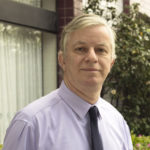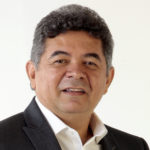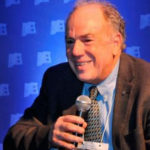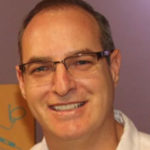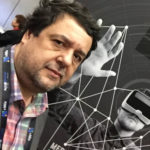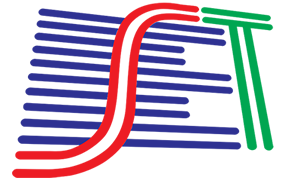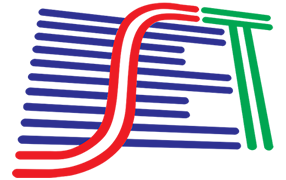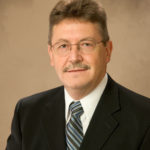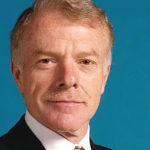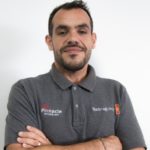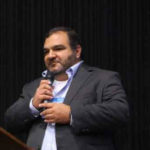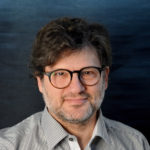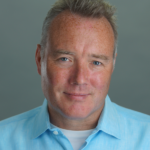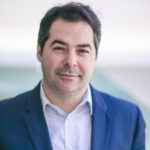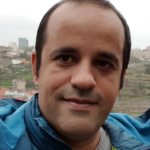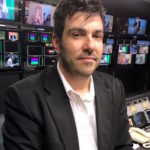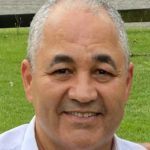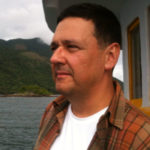6h45
|
Reception Desk
|
7h00
|
Reception
Breakfast
|
7h20
|
Opening Ceremony
Welcome – Carlos Fini – President of the Brazilian Society of Television Engineering (SET)
Carlos Fini is President of the Brazilian Society of Television Engineering (SET), with a two-year term of office from 2019-2020, CTO of the RBS Group, one of Brazil’s largest media groups, where he directs TV and Radio operations and Director of the Gaucho Association of Radio and Television Broadcasters (AGERT), acting on the technical committee. He is an electronics engineer, with a specialization in Business Management and a graduate degree in Telecommunications and Networks. He worked at TV Globo from 1979 to 2012, taking up the position of Engineering Manager in São Paulo in 1994. His professional background includes the implementation of the television channels in São Jose dos Campos in 1988 (TV Vanguarda), São Paulo in 1999 (TV Globo SP) and the digital transmission system in the same city in 2007. He has been a member of SET since 1988 and a participant in the Technical Module of the Brazilian Digital TV Forum (SBTVD Forum), where he was coordinator of multiplexing and middleware standards from 2006 to 2012.
|
7h30
|
Session 1
The transformation of satellite services in face of the latest generation media
This presentation will discuss the future of the satellite industry and how this technology is preparing to act in the world of VOD, streaming, and 4K in a competitive way. Topics such as new solutions for broadcast and signal contribution, the transition from the parabolic base of the analog to digital signal, the satellite as complementary coverage of Digital Terrestrial TV and the perspective of the DTH operators will be addressed.
Keep abreast of what has changed, what will change and what is already offered.
Chair: Luis Otavio Marchezetti – Broadcast Engineering VP – SKY
In this role, he is responsible for guaranteeing the delivery of pay TV channels for our clients with expected quality and availability.
Luis Otavio began his SKY Brasil career as Engineering Supervisor in 1995, moving up to Engineering Manager in 2001, position hold until 2008 when he became Director.
Among his many notable accomplishments, Luis Otavio participated in the project and construction of Brazil Broadcast Center, the 1st DTH Broadcast Center in LATAM back in 1995 and 1996. He was also responsible for three Satellite Transitions at DirecTV and SKY in 1998 – 2008. In addition, he was responsible for consolidating three Broadcast Centers in one during SKY/DTV entre 2005 – 2007, including all systems, operations and employees, besides launching HD in 2009, OTT platform in 2011 and Wireless Broadcast (LTE) from 2012 to 2013.
In 2015 to 2017, he leads the project of the new Broadcast Center in Jaguariúna.
In 2017 as recognition and contribution to the business gained the Vice President of Engineering and expanding his accomplishments with succeed the launching of the new satellite SKYB-1 and implementation of the new Broadcast Center in Jaguariúna.
In February 2019, he expanded his responsibilities and took over the Set Top Box and Broadband in Brasília.
Luis Otavio holds a Telecommunications Engineering degree from Universidade Federal Tecnológica do Paraná and Communications & Digital TV Systems post graduate degree from Instituto Nacional de Telecomunicações
Beyond capacity: new platforms and satellite services
- SES Ku-band free to air platform for the Brazilian market;
- Hybrid satellite/streaming systems;
- SES VoD-everywhere platform with multi screens.
Speaker: Jurandir Pitsch – Vice President Sales – SES
Jurandir M. Pitsch is Vice President of Sales at SES Video Latin America. He has a bachelor´s degree in Electrical Engineering and a graduate degree in Telecommunications, both at the University of Campinas, Brazil (UNICAMP). As a researcher, he worked in the field of satellites at the R&D Center of state-owned company Telebrás, and at Comsat Brasil as Director of Engineering and Vice President of Marketing. He’s been at SES since 2002.
ABS, Competitive Solutions in C-band
ABS demonstrates that with well-designed, latest generation, satellites, leading edge engineering and state of the art technology it is possible to provide the Brazilian market with highly competitive solutions in C-band, covering the entire Brazilian territory to support applications as TV Broadcast, Corporate VSAT, Maritime and IP Trunking/Backhaul.
Speaker: Estevão Ghizoni – MD of Sales – ABS Americas
Estevão Ghizoni has over 30 years of experience in the satellite and telecommunications industry. He heads up the Americas region market and is responsible for the development and implementation of sales strategies and business initiatives throughout this region.
Prior to joining ABS, Estevao spent 18 years in the bandwidth reseller markets and worked at Intelsat, PanAmSat and New Skies Satellites. He held various positions across from sales management for the Americas region, Global VSAT Product Management and System Engineer.
Estevão is fluent in English, Portuguese and Spanish and holds a MSC in Telecommunications and BSEE from the Instituto Tecnológico de Aeronáutica (ITA, in Brazil).
New opportunities for digital satellite distribution
This presentation will highlight the opportunities in the transition from analogic parabolic antennas to digital reception. The hybrid broadcast/broadband experience should be part of this transition so that DTH platforms can consider adopting the same middleware technology as Terrestrial TV (DTV Play).
Speaker: Leonardo Chaves – Transmission Technology Manager – TV Globo
Currently, I am the Transmission Technologies Manager at TV Globo and coordinator of Technical Module in Forum SBTVD. I had the BSc in Electronic and Computing Engineering at Federal University of Rio de Janeiro (UFRJ), and MSc. of Electrical Engineering at the same university. I’ve got the MBA Management in Catholic University in Rio de Janeiro (PUC-Rio).
|
8h15
|
Painel
Word from MCTIC and ANATEL
|
8h30
|
Session 2
Impacts of the new technologies on production models
The development and application of new technologies have brought about significant impacts on the model for producing and distributing content. Nevertheless, the availability of these technologies needs to be aligned with the changes in the production workflow and the attitude of those professionals engaged in the work environment. In journalism and sports, where agile delivery of information is a fundamental issue, storage, post-production, and display technologies have revolutionized the market and have made different players more competitive insofar as more vehicles now have access to those technologies.
Chair: Raimundo Lima – Member of the Deliberative Council SET and Director of Technology and Operations – SBT
With various decades of service to Brazilian free-to-air television, he has worked for Diários Associados, TV Manchete, TV Globo (GINY), TV Band, SBT, TV Cultura/SP and Esporte Interativo. Throughout this period, he has held different positions at the networks where he has worked in the Journalism, Sports, Drama and Entertainment departments. He has also worked at several teaching institutions like the University of Brasília, PUC/SP and the Fluminense Federal University, among others. He is currently Member of the Deliberative Council SET and Technology and Operations Director of SBT.
HDR Live Broadcasting: New Technologies and Workflows
High Dynamic Range (HDR) video describes an emerging group of monitoring, video encoding, and distribution technologies designed to enable a new home viewing experience with a next generation of television displays capable of intensely bright highlights, and high levels of contrast and color saturation.
HDR, whether in HD or with 4K and 8K UHD, will fundamentally change live and episodic TV production and storytelling.
This presentation will cover issues facing the broadcaster and O.B operators in the creation and distribution of HDR programs. In particular, details will be given of workflows for the simultaneous production of 4K/HD HDR and HD SDR programs while maintaining current style of image shading operations. Finally, a description will be given of techniques for real-time conversion to various formats for broadcast, OTT, as well as input to the production eco-system from other sources: conversions of OETF/EOTF, color spaces, HDR/SDR and resolution, graphic levels, and exposure levels of skin tones
Speaker: Hugo Gaggioni – Chief Technology Officer – Sony Professional Solutions Americas
Joined Sony in 1988. With research interests ranging from digital video and image processing and information theory to video/audio compression and multidimensional signal processing, Mr. Gaggioni has served as session-chairman of 13 international conferences in the areas of HDTV and bandwidth compression systems. He was a member of the Advanced Television Advisory group to the U.S. Federal Communications Commission (1987 to 1994). He is a Fellow of SMPTE and the recipient of the 2004 Leitch Gold Medal award for technology leadership. Mr. Gaggioni was chairman of the SMPTE technical groups on Digital Representation of the 1125/60 High Definition TV Standard (SMPTE 260M, 88-92) and Digital HDTV Serial Interfaces (SMPTE 292M, 93-96). He was also chairman for a SMPTE group on Editing of MPEG bit-streams for TV studio usage. Mr. Gaggioni represented Sony Corporation of America to the ANSI X3-L3 committee and the ISO/IEC MPEG coding group from 1988 to 1996. He has also given numerous presentations and tutorial courses on signal processing and advanced video technologies at international events sponsored by SMPTE, IEEE, and Eurasip organizations. He holds six patents and has authored 32 technical publications in the areas of video compression, digital filter banks and HDTV devices and systems. Mr. Gaggioni holds degrees in telecommunications, systems engineering, and electronic engineering from the University of Essex in Colchester, England; University of Pennsylvania, and Columbia University, respectively.
The future of audio, video and management technologies for content production
This presentation aims to discuss the new technologies of content production and the gains and challenges that they bring to the day-to-day areas of operation, projects, TV and IT engineering, since many of these innovations modify our way of transporting, producing, storing and displaying content. It will present some solutions for the production team and some tools that help the systems team to meet the demands of content producers.
Speaker: Raphael Severo – Product Specialist Network Audio and Video – Lawo AG
For more than ten years, Raphael Severo was an employee at one of the most respected organizations for sporting and entertainment event production in Latin America, as a specialist in IP infrastructure facilities, having played a part in the implementation of this model, resulting in huge operational and technological gains.
Raphael began working at Lawo AG in Germany in November 2018. Among his activities at Lawo AG, he participates in projects for IP implementation at studios and broadcasters around the world
Pinnacle introduces Blackmagic Design workflow to the Broadcast market
Blackmagic Design has been maintaining its concept of enabling the highest quality video to be accessible to everyone so that the post-production and television industry can become a truly creative industry”, according to Grant Petty, CEO. In this way, it has launched new cameras for Cinema and Television, with affordable cost, innovative technology, and high quality, with the necessary resources for whatever the production in a complete workflow.
Speaker: Fabio Angelini – Sales Engineer at Pinnacle Broadcast and Product Specialist at Blackmagic Design.
Working at the audiovisual market for more than 20 years, I started in the area of non-linear stations in the company Solution, now BCTV, where I continued as Camera Consultant. In 2002, I was invited to work at Pinnacle Home as a demonstrator and instructor of Studio and Liquid Editon software by Pinnacle Systems. In 2010, I started a new job at Distribuidora Techex Inc. as Technical Consultant for NewTek and Matrox in Brazil. I am currently a Blackmagic Design Product Specialist and Sales Engineering at Pinnacle Broadcast Distributor for all Latin America. I am married, I have three children and I live in São Paulo, Brazil.
|
9h15
|
Session 3
The Future with UHD
A ground-breaking gathering not to be missed, the Ultra HD Forum and the Projeto UHD Brasil (UHD Brazil Project, in English) will both be at the SET Breakfast @ NAB Show Seminar to discuss the development of ultra-high definition imagery technologies. The debate will focus on recent productions and means of distribution (internet, subscriber TV and terrestrial TV). There will be room for the presentation of data on production and global consumption of television sets capable of reproducing UHD content and major events transmitted in 4K. The Ultra HD Forum and the Projeto UHD Brasil are respectively global and national associations that bring together the leading industry players and entities focused on the next-gen TV.
Chair: Olimpio José Franco – General Director – SET
Olímpio José Franco is general director and member of the SET Board of Former Presidents. He is an electronic engineer with an extensive career in the field of television broadcasting. In 1969, he joined the Padre Anchieta Foundation (Radio and TV Cultura, São Paulo), as a trainee, from where he left only in 1988, when he held the position of technical director. From 1988 to 2003, he was technical director of TV Jovem Pan. He has owned Olympic Engineering in Audio and Video Systems since 1985, working on audio and video projects and installations. He is the founder of SET, having served as president for four terms, as well as being technology director and vice president at various times. He is a life member of SMPTE and member of the Technical Module of the SBTVD Forum. In 2017 he received the “Honorary member” awards from the ITE (Institute of Image Information and Television Engineers – Japan) and Radio Achievement Award 2017″ from ARIB (Association of Radio Industries and Businesses).
UHD Brazil Project
In this presentation, the speakers will highlight the work of the Projeto UHD Brasil (UHD Brazil Project) and achievements to date. Also, tests and advances in UHD in Brazil will be approached such as:
- Demonstrations in UHD during the 2018 FIFA World Cup Finals;
- The quality, transmission efficiency and use of Integrated Broadcast Broadband (IBB) in content distribution;
- Demonstrations of ATSC 3.0 in the pilot station set up by Globo TV;
- The history of demonstrations of transmission and capture technologies since 1998;
- Usefulness of addressable content, multi-screen capability and IBB.
- The relevance of ISDB-Tb, its evolution and the importance of the Forum SBTVD.
Speaker: Olimpio José Franco – General Director – SET
Olímpio José Franco is general director and member of the SET Board of Former Presidents. He is an electronic engineer with an extensive career in the field of television broadcasting. In 1969, he joined the Padre Anchieta Foundation (Radio and TV Cultura, São Paulo), as a trainee, from where he left only in 1988, when he held the position of technical director. From 1988 to 2003, he was technical director of TV Jovem Pan. He has owned Olympic Engineering in Audio and Video Systems since 1985, working on audio and video projects and installations. He is the founder of SET, having served as president for four terms, as well as being technology director and vice president at various times. He is a life member of SMPTE and member of the Technical Module of the SBTVD Forum. In 2017 he received the “Honorary member” awards from the ITE (Institute of Image Information and Television Engineers – Japan) and Radio Achievement Award 2017″ from ARIB (Association of Radio Industries and Businesses).
Speaker: Paulo Henrique Castro – Technology and R&D Director – TV Globo
Engineer by the Pontifical Catholic University of Rio de Janeiro in 1996 (PUC-Rio). Working with Globo since 1996, where started on an internship program. Responsible for the standardization of the Digitial TV in Brazil. -Coordinator of the Audio and Video Coding Working Group of the SBTVD Forum. -Chairman of the ABNTCommitee for Digital TV (Associação Brasileira de Normas Técnicas, Brazilian ISO Branch). -Contact point for Subgroup A – Specifications, on the Brazil-Japan Joint Work Group for Digital Television iniciative -Member of SET (Sociedade Brasileira de Engenharia de Televisão) since 1996. Also a member of many societies of IEEE(CommSoc, BTS, MTT, CE) and SMPTE
UHD Forum: where we’re at after 4 years
In this session, the UHD Forum, will discuss:
- Our work on UHD interoperability and guidelines for both foundation and enhancement Technologies
- Global deployments & the state of HDR
- Future trends in UHD
- What benefits we can bring to Brazilian stakeholders.
Speaker: Thierry Fautier – UHDF President
As Vice President of Video Strategy at Harmonic, Thierry Fautier is in charge of defining and driving the execution of the long term strategy of Harmonic’s video business. In addition, Fautier is the current President of the Ultra HD Forum, the global organization responsible for promoting market adoption of UHD by defining industry best practices for the phased introduction of the wide set of technologies that will facilitate the next-generation viewing experience.
His previous experience at Harmonic includes leadership positions in Solutions Marketing, where his area of responsibility covered Harmonic’s major markets, including broadcast, cable, telco, DTH and OTT, as well as multiscreen initiatives. Prior to joining Harmonic, he was Vice President of Marketing for Vsofts and held various positions at Philips in Research, Engineering and Marketing. Fautier was one of the primary drivers at Philips in the creation of MPEG technology and in the development of the first MPEG-2 STB system on chip solutions. An experienced speaker, he has presented at leading industry conferences throughout the world.
Speaker: Benjamin Schwarz – UHDF Communication Chair
As an active consultant, analyst and blogger, Ben is recognised as an international thought leader in the converging media space. After ten years in IT at Logica CMG, he ran technology for a music start-up. Ben spent the next ten years in telecoms, with Orange, aligning strategy to a world with the Internet. He ran innovation programs launching several media-based services including IPTV in Europe and Africa. Since 2008 he has run his own company, CTO innovation Consulting, now helping international clients with strategy, business modelling, technology. In 2012, he added communications and PR to his portfolio. Ben joined the Ultra HD Forum in 2015 where he works on next-generation TV and entertainment and now chairs the communications workgroup. In 2018 Ben started running Communications for a blockchain start-up. He lives in Paris, and his social media name is @nebul2.
|
